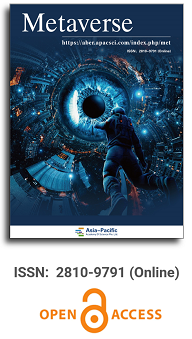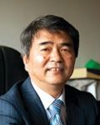
Asia Pacific Academy of Science Pte. Ltd. (APACSCI) specializes in international journal publishing. APACSCI adopts the open access publishing model and provides an important communication bridge for academic groups whose interest fields include engineering, technology, medicine, computer, mathematics, agriculture and forestry, and environment.



Life, death, and AI: Exploring digital necromancy in popular culture—Ethical considerations, technological limitations, and the pet cemetery conundrum
Vol 4, Issue 1, 2023
Download PDF
Abstract
This article explores the rise of generative AI, particularly ChatGPT, and the combination of large language models (LLM) with robotics, exemplified by Ameca the Robot. It addresses the need to study the ethical considerations and potential implications of digital necromancy, which involves using AI to reanimate deceased individuals for various purposes. Reasons for desiring to engage with a disembodied or bodied replica of a person include the preservation of memories, emotional closure, cultural heritage and historical preservation, interacting with idols or influential figures, educational and research purposes, and creative expression and artistic endeavors. As such, this article examines historical examples of the practice in hologram concerts, CGI characters, and others in order to analyze the ethical concerns related to privacy, consent, and commercial gain. It delves into the challenges of accurately representing individual personalities, misrepresenting cultural context, and the limitations of available data. Furthermore, it explores the Pet Cemetery conundrum and its impact on the grieving process, mental health, and the moral implications of using AI to generate interactions with the deceased. By contemplating future use cases like interactive virtual assistants and realistic historical reenactments, the article highlights the importance of addressing ethical implications as these technologies continue to advance and contributes to the discourse on the responsible and ethical use of generative AI, LLM, and robotics in the context of digital resurrection, calling for ongoing discussions and considerations of AI rights, social dynamics, and the grieving process.
Keywords
References
- Fuller A, Fan Z, Day C, et al. Digital twin: Enabling technologies, challenges and open research. IEEE access 2020; 8: 108952–108971. doi: 10.1109/ACCESS.2020.2998358.
- Morse T. Digital necromancy: Users’ perceptions of digital afterlife and posthumous communication technologies. Information, Communication & Society 2023: 1–17. doi: 10.1080/1369118X.2023.2205467.
- Dunn S. Identity manipulation: Responding to advances in artificial intelligence and robotics. In: WeRobot; 2020 Sep 22–25. 2020. doi: 10.2139/ssrn.3772957.
- Savin-Baden M, Burden D. Digital immortality and virtual humans. Postdigital Science and Education 2019; 1: 87–103. doi: 10.1007/s42438-018-0007-6.
- Sestino A, D’Angelo A. My doctor is an avatar! The effect of anthropomorphism and emotional receptivity on individuals’ intention to use digital-based healthcare services. Technological Forecasting and Social Change 2023; 191: 122505. doi: 10.1016/j.techfore.2023.122505.
- Engineered Arts [Internet]. England: Engineered Arts [cited 2023 Apr 8]. Available from: https://www.engineeredarts.co.uk/robot/ameca/.
- Xygkou A, Siriaraya P, Covaci A, et al. The “Con-versation” about Loss: Understanding how Chatbot technology was used in supporting people in grief. In: Schmidt A, Väänänen K (editors). In: Proceedings of the 2023 CHI Conference on Human Fac-tors in Computing Systems; 2023 Apr 23–28; Hamburg Germany. New York: Association for Computing Machinery; 2023. p. 1–15. doi: 10.1145/3544548.3581154.
- Rodanés-Vicente JM, Cuchí-Oterino JA, Minami T, et al. Use of cinnabar in funerary practices in the Central Pyrenees. Analysis of pigments on bones from the prehistoric burial of the Cueva de la Sierra cave in Campodarbe (Huesca, Spain). Journal of Archaeological Science: Reports 2023; 48: 103849. doi: 10.1016/j.jasrep.2023.103849.
- Lee PYK, Ma NF, Kim IJ, et al. Speculating on risks of AI clones to selfhood and relationships: Doppelganger-phobia, identity fragmentation, and living memories. In: Nichols J (editor). Proceedings of the ACM on Human-Computer Interaction; 2023 Apr. New York: Association for Computing Machinery; 2023. p. 1–28. doi: 10.1145/3579524.
- StoryFile [Internet]. USA: StoryFile [cited 2023 Apr 8]. Available from: https://storyfile.com/.
- Kaur G, Chauhan P. Cybersecurity Vis-A-Vis artificial intelligence: An analysis of the international conventions. In: Kacprzyk J (editors). Lecture Notes in Networks and Systems. New York: LNNS; 2022. p. 490. doi: 10.1007/978-981-19-4052-1_36.
- Rani V, Kumar M, Mittal A, et al. Artificial intelligence for cybersecurity: Recent advancements, challenges and opportunities. In: Nedjah N, Abd EI-Latif AA, Gupta BB, et al. (editors). Robotics and AI for cybersecurity and critical infrastructure in smart cities. Cham: Springer; 2022. p. 73–88. doi: 10.1007/978-3-030-96737-6_4.
- Shamayleh G, Arsel Z. From blogs to platforms. In: Belk R, Llamas R (editors). The Routledge handbook of digital consumption. Abingdon: Routledge; 2022. doi: 10.4324/9781003317524-11.
- Cao L. A new age of AI: Features and futures. IEEE Intelligent Systems 2022; 37(1): 25–37. doi: 10.1109/MIS.2022.3150944.
- Xie T, Pentina I. Attachment theory as a framework to understand relationships with social chatbots: A case study of Replika. In: Hawaiian International Conference on Systems Sciences (HICSS); 2022 Jan 4–7; Maui. USA: HICSS; 2022. p. 2046–2055. doi: 10.24251/HICSS.2022.258.
- Allison F, Nansen B, Gibbs M, et al. Bones of contention: Social acceptance of digital cemetery technologies. In: Proceedings of the 2023 CHI Conference on Human Factors in Computing Systems; 2023 Apr 23–28; Hamburg, Germany. New York: Association for Computing Machinery; 2023. p. 1–17. doi: 10.1145/3544548.3581520.
- Aksar IA, Firdaus A, Pasha SA. Virtual vs. real self: Gendered presentation and everyday performance of virtual selfhood—A case study of pakistan. Journal of Communication Inquiry 2023; 47(1): 84–114. doi: 10.1177/01968599221089236.
- Lindemann NF. The ethical permissibility of chatting with the dead: Towards a normative framework for “Deathbots”. Boulder: the Institute of Cognitive Science; 2022. doi: 10.48693/67.
- Safdar NM, Banja JD, Meltzer CC. Ethical considerations in artificial intelligence. European Journal of Radiology 2020; 122: 108768. doi: 10.1016/j.ejrad.2019.108768.
- Kapcár A. The origins of necromancy or how we learned to speak to the dead. Sacra 2015; 13(2): 30–58.
- Ritner RK. Necromancy in ancient Egypt. In: Magic and divination in the Ancient World. Leiden: Brill; 2002. p. 89–96
- Karamanides D. Pythagoras: Pioneering mathematician and musical theorist of ancient Greece. New York: The Rosen Publishing Group, Inc.; 2006.
- Gallucci MA, Gallucci MA. Cellini’s Poetics II: The Vita. In: Benvenuto Cellini: Sexuality, masculinity, and artistic identity in Renaissance Italy. New York: Palgrave Macmillan; 2003. p. 71–108.
- Klaassen F. Necromancy. 1st ed. In: The Routledge history of medieval magic. New York: Routledge; 2019. p. 201–211.
- Dimolianis S, Evans SP. Jack the ripper and black magic: Victorian conspiracy theories, secret societies and the supernatural mystique of the white-chapel murders. North Carolina: McFarland & Company, Incorporated Publishers; 2013.
- Owen A. The darkened room: Women, power, and spiritualism in late Victorian England. Chicago: University of Chicago Press; 1990.
- Moser JM. Tupac lives! What hologram authors should know about intellectual property law [Internet]. Business Law Today, 2012 Sep, p. 1–5. Available from: https://www.americanbar.org/content/dam/aba/publications/blt/2012/09/full-issue-201209.pdf.
- Weitz C, Gilroy T. Rogue One: A Star Wars story. Edwards G (director). San Francisco: Lucasfilm Ltd.; 2016.
- Alkis A, Kose T. Privacy concerns in consumer E-commerce activities and response to social media advertising: Empirical evidence from Europe. Computers in Human Behavior 2022; 137: 107412. doi: 10.1016/j.chb.2022.107412.
- Mehmood S, Ahmad I, Khan MA, et al. Sentiment analysis in social media for competitive environment using content analysis. Education, Computer, Materials & Continua 2022; 71(3): 5603–5618. doi: 10.32604/cmc.2022.023785.
- Birnhack M, Morse T. Digital remains: Property or privacy? International Journal of Law and Information Technology 2022; 30(3): 280–301. doi: 10.1093/ijlit/eaac019.
- Williams AS, Pedersen ZP, Brummett KJ. Legacy branding: The posthumous utilization and management of athlete brands. International Journal of Sport Communication 2022; 15(2): 1–8. doi: 10.1123/ijsc.2021-0114.
- Mostert F, Cruz S. How image rights have changed over the past 20 years. In: Bosher H, Rosati E (editors). Developments and directions in Intellectual Property Law: The IPKat’s 20-year adventure, forthcoming. London: Oxford University Press; 2022.
- Hagerty A, Rubinov I. Global AI ethics: A review of the social impacts and ethical implications of artificial intelligence. New York: Cornell University; 2019. doi: 10.48550/arXiv: 1907.07892.
- Berkowitz I, Garrett JR. Legal and ethical considerations for requiring consent for apnea testing in brain death determination. The American Journal of Bioethics 2020; 20(6): 4–16. doi: 10.1080/15265161.2020.1754501.
- Wang P. On defining artificial intelligence. Computer Science, Journal of Artificial General Intelligence 2019; 10(2): 1–37. doi: 10.2478/jagi-2019-0002.
- Minsky M. The emotion machine: Commonsense thinking, artificial intelligence, and the future of the human mind. New York: Simon and Schuster; 2007.
- Sisto D, Kilgarriff A (translators). Remember me: Memory and forgetting in the digital age. Hoboken, New Jersey: John Wiley & Sons; 2021.
- Payton T, Claypoole T. Privacy in the age of big data: Recognizing threats, defending your rights, and protecting your family. Maryland: Rowman & Littlefield; 2023.
- DiGiovanna J. 20 artificial identity. In: Patrick L, Keith A, Ryan J (editors). Robot Ethics 2.0: From autonomous cars to artificial intelligence. New York: Oxford University Press; 2017. p. 243.
- Prabhakaran V, Qadri R, Hutchinson B. Cultural incongruencies in artificial intelligence. New York: Cornell University; 2022. doi: 10.48550/arXiv: 2211.13069.
- Yue P, Shangguan B, Hu L, et al. Towards a training data model for artificial intelligence in earth observation. International Journal of Geographical In-formation Science 2022; 36(11): 2113–2137. doi: 10.1080/13658816.2022.2087223.
- Mori M, MacDorman KF, Kageki N. The uncanny valley [from the field]. IEEE Robotics & Automation Magazine 2012; 19(2): 98–100. doi: 10.1109/MRA.2012.2192811.
- Agarwal S, Agarwal B, Gupta R. Chatbots and virtual assistants: A bibliometric analysis. Library Hi Tech 2022; 40(4): 1013–1030. doi: 10.1108/LHT-09-2021-0330.
- Hristova S. Data replay. In: Proto-Algorithmic War: How the Iraq War became a laboratory for algorithmic logics. Cham: Springer International Publishing; 2022. p. 89–115.
- Hamon R, Junklewitz H, Sanchez I, et al. Bridging the gap between AI and explainability in the GDPR: Towards trustworthiness-by-design in automated decision-making. IEEE Computational Intelligence Magazine 2022; 17(1): 72–85. doi: 10.1109/MCI.2021.3129960.
- de Almeida PGR, dos Santos CD, Farias JS. Artificial intelligence regulation: A framework for governance. Ethics and Information Technology 2021; 23(3): 505–525. doi: 10.1007/s10676-021-09593-z.
- Horgan D, Romao M, Morré SA, et al. Artificial intelligence: Power for civilization—And for better healthcare. Public Health Genomics 2020; 22(5–6): 145–161. doi: 10.1159/000504785.
- Haefner N, Wincent J, Parida V, et al. Artificial intelligence and innovation management: A review, framework, and research agenda. Technological Forecasting and Social Change 2021; 162: 120392. doi: 10.1016/j.techfore.2020.120392.
- Gaur M, Faldu K, Sheth A. Semantics of the blackbox: Can knowledge graphs help make deep learning systems more interpretable and explainable? IEEE Internet Computing 2021; 25(1): 51–59. doi: 10.1109/MIC.2020.3031769.
- Liu YL, Huang L, Yan W, et al. Privacy in AI and the IoT: The privacy concerns of smart speaker users and the Personal Information Protection Law in China. Telecommunications Policy 2022; 46(7): 102334. doi: 10.1016/j.telpol.2022.102334.
- Martins P, Silva JS, Bernardino A. Multispectral facial recognition in the wild. Sensors 2022; 22(11): 4219. doi: 10.3390/s22114219.
- Brauneck A, Schmalhorst L, Kazemi Majdabadi MM, et al. Federated machine learning, privacy-enhancing technologies, and data protection laws in medical research: Scoping review. Journal of Medical Internet Research 2023; 25: e41588. doi: 10.2196/41588.
Supporting Agencies
Copyright (c) 2023 James Hutson, Jeremiah Ratican

This work is licensed under a Creative Commons Attribution 4.0 International License.

This site is licensed under a Creative Commons Attribution 4.0 International License (CC BY 4.0).

Prof. Zhigeng Pan
Professor, Hangzhou International Innovation Institute (H3I), Beihang University, China

Prof. Jianrong Tan
Academician, Chinese Academy of Engineering, China
Conference Time
December 15-18, 2025
Conference Venue
Hong Kong Convention and Exhibition Center (HKCEC)
...
Metaverse Scientist Forum No.3 was successfully held on April 22, 2025, from 19:00 to 20:30 (Beijing Time)...
We received the Scopus notification on April 19th, confirming that the journal has been successfully indexed by Scopus...
We are pleased to announce that we have updated the requirements for manuscript figures in the submission guidelines. Manuscripts submitted after April 15, 2025 are required to strictly adhere to the change. These updates are aimed at ensuring the highest quality of visual content in our publications and enhancing the overall readability and impact of your research. For more details, please find it in sumissions...






.jpg)
.jpg)

